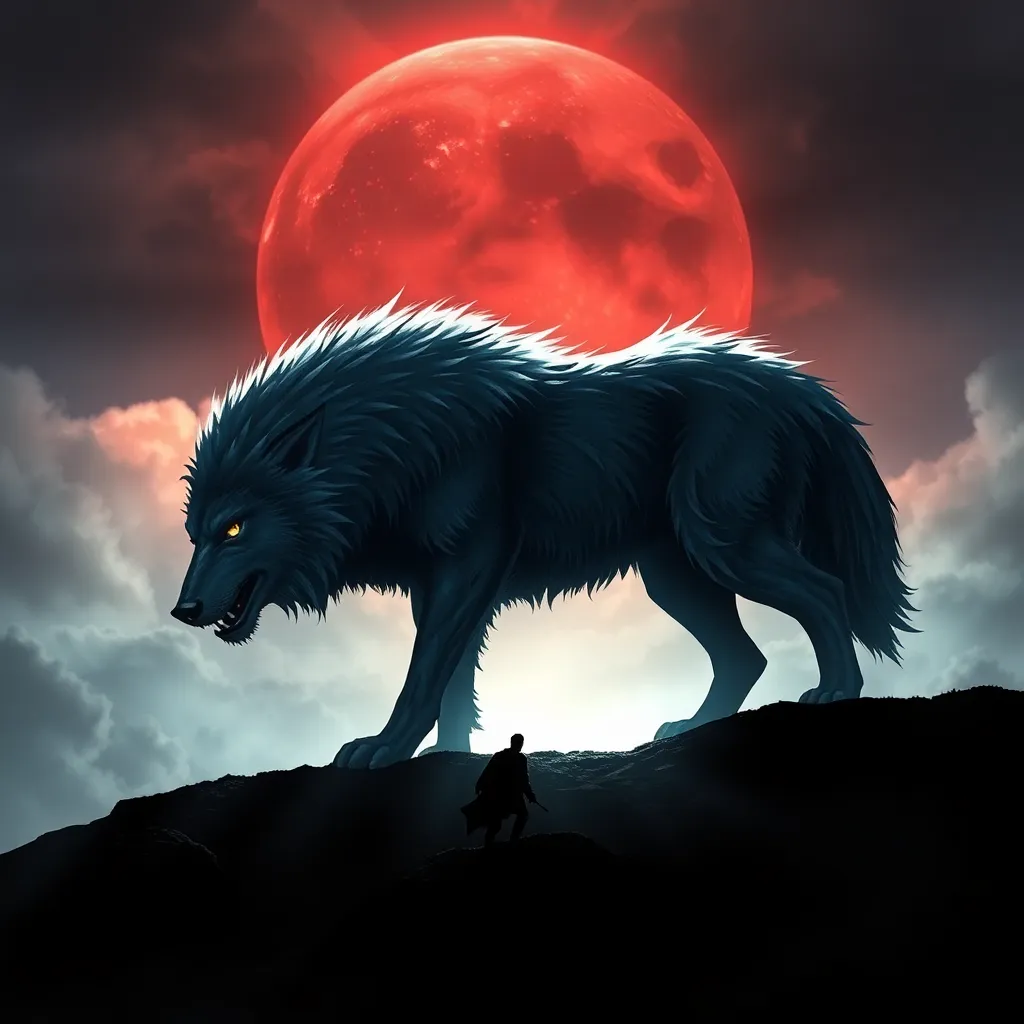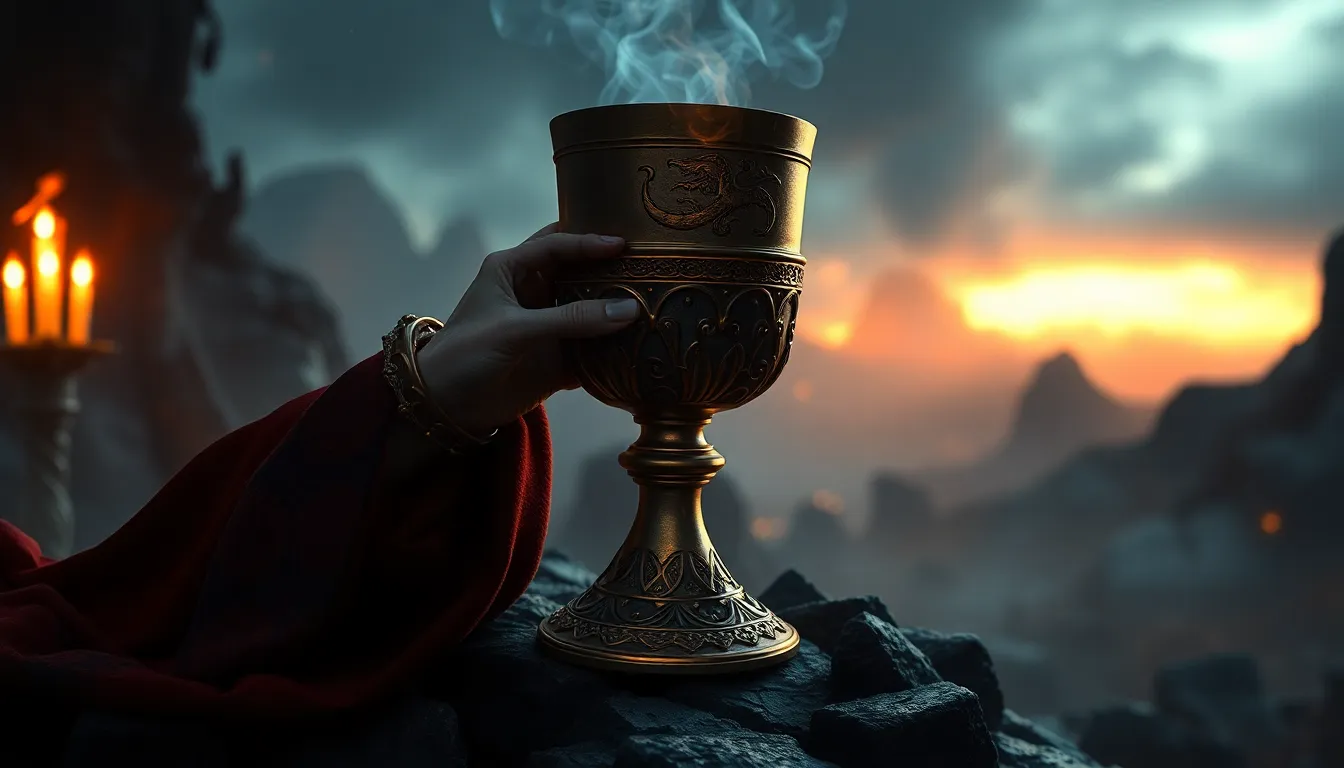Fenrir: The Wolf Who Shapes the World
I. Introduction
In Norse mythology, Fenrir, the colossal wolf, stands as one of the most formidable figures, embodying the themes of chaos and destruction. His story is interwoven with the fate of the gods and the world itself, making him a significant character in the mythological narrative. Fenrir represents not just a singular story of a beast but a powerful symbol of the inevitable forces of nature and fate that shape the cosmos.
This article aims to explore the origins, symbolism, and cultural impact of Fenrir, shedding light on how this legendary wolf continues to influence contemporary narratives and discussions about destiny and free will.
II. The Origins of Fenrir
A. Parentage and lineage: Loki and Angerboda
Fenrir is the offspring of the trickster god Loki and Angerboda, a giantess. His lineage places him in a unique position among the gods, being the brother to other notable figures such as Jormungandr, the Midgard Serpent, and Hel, the queen of the underworld. This heritage underscores his connection to chaos and the primal forces of nature.
B. The prophecy of destruction and chaos
From his birth, Fenrir was prophesied to bring destruction to the gods. The seeress foretold that he would play a critical role in the events of Ragnarok, the cataclysmic battle that would result in the deaths of many gods and the rebirth of the world. This prophecy instilled fear among the gods, leading them to view Fenrir not merely as a creature but as a harbinger of doom.
C. Fenrir’s early life and upbringing among the gods
Despite being raised among the Aesir gods, Fenrir’s formidable nature was evident from a young age. His monstrous size and strength prompted the gods to grow increasingly wary of him. They initially attempted to keep him close, hoping to control his potential for destruction, but their fears only grew as he matured.
III. Fenrir’s Symbolism in Norse Mythology
A. Representations of chaos and destruction
Fenrir embodies chaos and destruction, symbolizing the uncontrollable forces that threaten order. His existence challenges the gods’ authority and represents the idea that no matter how powerful one may be, there are forces beyond comprehension that can disrupt the natural order.
B. Fenrir as a symbol of inevitable fate
In Norse belief, fate is an inescapable force, and Fenrir exemplifies this concept. His binding and eventual release during Ragnarok serve as a reminder that destiny cannot be avoided. The gods’ attempts to restrain him only delay the inevitable, illustrating the futility of resisting fate.
C. His role in the cycle of creation and destruction
Fenrir’s story is also a reflection of the cyclical nature of existence. His actions during Ragnarok lead not only to destruction but also to renewal. From the ashes of the old world, a new one is born, highlighting the themes of death and rebirth prevalent in many mythologies.
IV. The Binding of Fenrir
A. The gods’ fear and the decision to bind Fenrir
The gods, feeling threatened by Fenrir’s growing strength, decided to bind him to prevent the prophecy from coming true. They created a series of chains to hold him, but each time he broke free, their desperation increased. This culminated in their decision to use a magical fetter.
B. The creation of Gleipnir: the magical fetter
Gleipnir was crafted by dwarves and is described as a thin yet incredibly strong ribbon. It was made from six mythical ingredients:
- The sound of a cat’s footfall
- The beard of a woman
- The roots of a mountain
- The sinews of a bear
- The breath of a fish
- The spittle of a bird
When the gods presented Gleipnir to Fenrir, he agreed to be bound under the condition that one of the gods would place their hand in his mouth as a pledge of good faith. This was the brave Tyr, who sacrificed his hand when Fenrir realized he had been deceived.
C. The significance of the binding in mythological narratives
The binding of Fenrir serves as a pivotal moment in Norse mythology, representing the struggle between order and chaos. It highlights the lengths to which the gods would go to maintain control over fate, and ultimately, it foreshadows the events of Ragnarok, where Fenrir would break free and fulfill his destiny.
V. The Role of Fenrir in Ragnarok
A. The prophecy of Ragnarok and Fenrir’s role
Ragnarok is characterized by a series of events that lead to the end of the world, and Fenrir is central to this narrative. He is foretold to break free from his bonds and partake in the battle against the gods.
B. The battle between Fenrir and Odin
During the climactic battle of Ragnarok, Fenrir confronts Odin, the chief of the gods. This fierce battle symbolizes the ultimate clash between order and chaos. Odin, despite his power, meets his demise at the jaws of Fenrir, illustrating the theme that even the strongest can fall to the inevitable forces of fate.
C. The implications of Fenrir’s actions during Ragnarok
Fenrir’s actions during Ragnarok signify the fulfillment of the prophecy and the cyclical nature of life. His role in the destruction of the old world sets the stage for the rebirth and renewal of the cosmos, reinforcing the idea that destruction is a necessary precursor to creation.
VI. Fenrir in Modern Culture
A. Representation in literature and film
Fenrir has been depicted in various forms of modern literature and cinema, often as a symbol of chaos and rebellion. His character has appeared in works ranging from comic books to blockbuster films, engaging new audiences with his mythological roots.
B. Influence on contemporary interpretations of mythology
Modern interpretations often explore Fenrir’s duality as both a monster and a misunderstood creature. This nuanced portrayal invites deeper reflections on themes of fate, freedom, and the human condition.
C. Fenrir in popular media and gaming
In video games and popular media, Fenrir is frequently featured as a powerful adversary or a compelling ally. His character resonates with themes of strength and destiny, making him a popular choice for storytelling in various genres.
VII. The Legacy of Fenrir
A. Fenrir’s impact on Norse mythology and beyond
Fenrir’s legacy extends beyond Norse mythology, influencing various cultural narratives throughout history. His story serves as a cautionary tale about the consequences of trying to escape one’s fate.
B. The archetype of the monstrous wolf in various cultures
The archetype of the monstrous wolf, as embodied by Fenrir, can be found in numerous cultures worldwide. Wolves often symbolize wildness and the untamed aspects of nature, representing both danger and loyalty.
C. Fenrir’s relevance in discussions of fate and free will
Fenrir’s narrative invites discussions on fate versus free will, challenging individuals to consider the extent of their control over their destinies. His story raises profound questions about the nature of existence and the forces that govern life.
VIII. Conclusion
Fenrir, the wolf who shapes the world, is a complex figure in Norse mythology, representing chaos, fate, and the cyclical nature of existence. His story serves as a reminder of the inevitable forces that drive the universe and the struggles between order and chaos.
As we reflect on Fenrir’s significance in both ancient and modern narratives, it becomes clear that his legacy endures, continuing to resonate with people today. Fenrir’s tale invites us to ponder our own relationship with fate and the wild forces of nature that surround us.
Ultimately,


